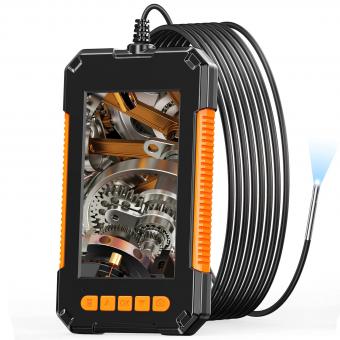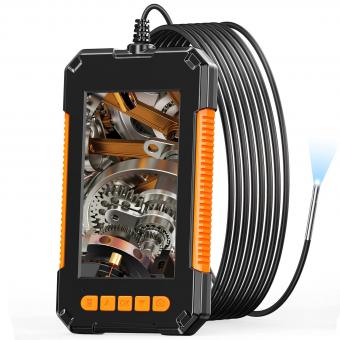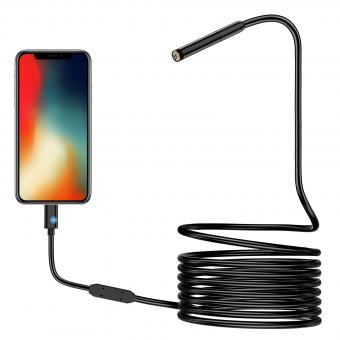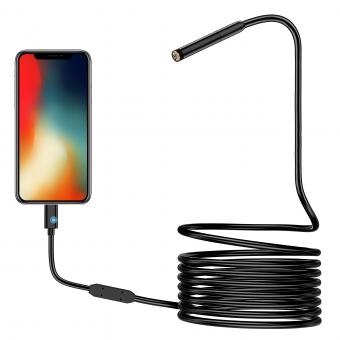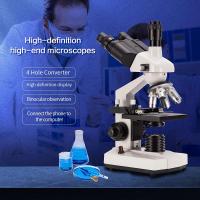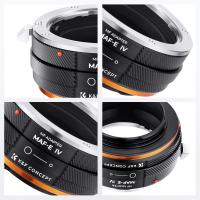What Is The Science Behind A Endoscope Science ?
Endoscopy is a medical procedure that involves the use of an endoscope, which is a flexible tube with a light and camera attached to it. The science behind endoscopy involves the principles of optics, electronics, and imaging technology. The endoscope is inserted into the body through a natural opening or a small incision, and it allows doctors to visualize and examine the internal organs and tissues.
The light source in the endoscope illuminates the area being examined, and the camera captures images that are transmitted to a monitor for the doctor to view. The endoscope can also be equipped with tools for taking biopsies or performing other procedures.
The development of endoscopy has revolutionized the diagnosis and treatment of many medical conditions, as it allows doctors to see inside the body without the need for invasive surgery. The science behind endoscopy continues to evolve, with advances in imaging technology and miniaturization of instruments leading to improved diagnostic accuracy and patient outcomes.
1、 Optical principles of endoscopy
What is the science behind an endoscope? The answer lies in the optical principles of endoscopy. Endoscopes are medical devices that allow doctors to see inside the body without making large incisions. They consist of a long, thin tube with a camera and light source at the end. The camera captures images of the inside of the body, which are transmitted to a monitor for the doctor to view.
The optical principles of endoscopy involve the use of lenses and fiber optics. The camera at the end of the endoscope uses a lens to focus light onto an image sensor. The light source, typically an LED, illuminates the area being examined. Fiber optics are used to transmit the light from the source to the end of the endoscope.
The latest point of view in endoscopy is the use of advanced imaging technologies such as high-definition and 3D imaging. These technologies provide clearer and more detailed images, allowing doctors to better diagnose and treat medical conditions. Additionally, there is ongoing research into the use of artificial intelligence and machine learning to improve the accuracy and efficiency of endoscopic procedures.
In conclusion, the science behind an endoscope is based on the optical principles of endoscopy, which involve the use of lenses and fiber optics to capture and transmit images of the inside of the body. The latest advancements in endoscopy include advanced imaging technologies and the use of artificial intelligence and machine learning. These advancements are improving the accuracy and efficiency of endoscopic procedures, leading to better patient outcomes.
2、 Endoscope design and components
Endoscope science involves the design and components of endoscopes, which are medical devices used to visualize and access internal organs and tissues. The science behind endoscopes is based on the principles of optics, electronics, and materials science.
Endoscope design involves the development of instruments that can be inserted into the body through natural orifices or small incisions. The design must take into account the size and shape of the organ or tissue being examined, as well as the need for flexibility and maneuverability. The latest advancements in endoscope design include the use of miniaturized cameras, advanced imaging technologies, and robotic systems that allow for greater precision and control.
The components of an endoscope include the light source, camera, and flexible tube. The light source provides illumination for the camera, which captures images of the internal organs and tissues. The flexible tube allows for the endoscope to be inserted into the body and maneuvered to the desired location. The latest advancements in endoscope components include the use of high-resolution cameras, wireless transmission of images, and disposable components that reduce the risk of infection.
Overall, the science behind endoscopes is constantly evolving as new technologies and materials are developed. These advancements are improving the accuracy and safety of endoscopic procedures, and are helping to expand the range of conditions that can be diagnosed and treated using endoscopy.
3、 Endoscopic imaging technologies
What is the science behind an endoscope? Endoscopic imaging technologies are the key to understanding the science behind an endoscope. Endoscopes are medical devices that allow doctors to see inside the body without making large incisions. They are used to diagnose and treat a variety of medical conditions, including gastrointestinal disorders, respiratory problems, and urological issues.
Endoscopic imaging technologies use a combination of light, lenses, and cameras to capture images of the inside of the body. The endoscope is inserted into the body through a small incision or natural opening, such as the mouth or anus. The camera at the end of the endoscope captures images of the internal organs and tissues, which are then transmitted to a monitor for the doctor to view.
The latest advancements in endoscopic imaging technologies have made it possible to capture high-quality images and videos of the inside of the body. These technologies include high-definition cameras, narrow-band imaging, and confocal laser endomicroscopy. These advancements have improved the accuracy of diagnoses and made it easier for doctors to perform minimally invasive procedures.
In conclusion, the science behind an endoscope is based on the use of endoscopic imaging technologies. These technologies use light, lenses, and cameras to capture images of the inside of the body, which are then transmitted to a monitor for the doctor to view. The latest advancements in endoscopic imaging technologies have improved the accuracy of diagnoses and made it easier for doctors to perform minimally invasive procedures.
4、 Endoscopic procedures and applications
What is the science behind an endoscope? Endoscopic procedures and applications involve the use of a flexible or rigid tube with a camera and light source at the end to visualize and access internal organs and structures. The science behind endoscopy involves the principles of optics, imaging, and minimally invasive surgery.
The endoscope's camera and light source use fiber optics to transmit images from the inside of the body to a monitor outside. The images are magnified and provide a detailed view of the internal structures, allowing doctors to diagnose and treat various conditions. The endoscope's flexibility allows it to navigate through the body's natural curves and bends, reducing the need for invasive surgery.
Endoscopic procedures have revolutionized the medical field, allowing for less invasive and more precise diagnosis and treatment of various conditions. Endoscopy is used in gastroenterology, pulmonology, urology, gynecology, and other medical specialties.
The latest point of view in endoscopy is the development of advanced imaging technologies, such as high-definition and 3D imaging, which provide even more detailed and accurate images. Additionally, the use of robotics in endoscopic procedures is becoming more common, allowing for even greater precision and control.
In conclusion, the science behind endoscopy involves the principles of optics, imaging, and minimally invasive surgery. Endoscopic procedures have revolutionized the medical field, and the latest advancements in imaging and robotics are further improving the accuracy and precision of these procedures.


